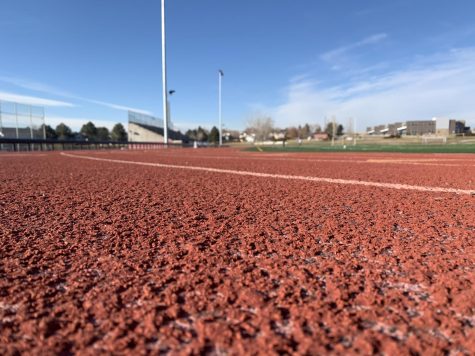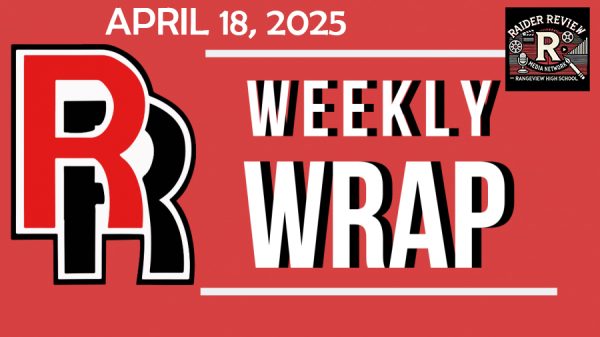THE REVIEW INVESTIGATES– Is School Spending the Problem?
January 17, 2023
Most are uninformed as to how schools get their money and spend it on students, and why it seems at times that there’s always some issue with how our school is running. The purpose of this investigative series is to pinpoint answers and provide clarity on how schools have to spend the money they receive. Further, it is to determine what ways this negatively and positively impacts those who feel it the most.
Most school districts in Colorado are funded the same way. Districts receive a certain amount of money from the state general education fund, as well as from sales and local tax revenue. The amount of state aid a district receives will partially depend on state contributions in the form of property and other ownership taxes, as well as sales tax. In simpler words, the more money a district generates, the more the state funds education in the district. In 2020 the state distributed $7.6 billion to the 178 school districts in Colorado, state taxes contributed $4.6 billion of that and local contributions like property made up the other $3 billion.
The state uses a formula to determine the amount each district gets per student. Per pupil funding is calculated for each district in the state before the next school year as the base way to anticipate funding needs.
I asked Vice Principal Jennifer Rahn if she felt like the formula needed changing, that the number for per pupil is accurate from her observations? “What’s usually released for the public to see isn’t always fully representative at first..” She explained that “How it starts off is usually during February or March a projection for the amount each student will receive comes for the next school year”.
Although each school district varies, factors that affect this initial number can be “based on the individual characteristics of the district, such as the cost to live in the district and the number of students enrolled (leg.colorado.gov, Colorado Legislative Staff)”.
Using the 2019 school year as an example, “Funding under the school finance act is based on the number of pupils enrolled in the school district on October 1. Thus, the number of pupils counted on October 1, 2019, determines funding for the budget year beginning July 1, 2019. Because the fiscal year begins before the count date, state aid is distributed based on estimated pupil counts. State aid is adjusted to reflect the actual count, usually starting in January of the fiscal year” (leg.colorado.gov, Colorado Legislative Staff).
This is why schools take October count so seriously, they want to get the proper amount of funding per student. During the 2019-2020 school year, average funding per pupil reached $4,000 for local funding and state aid contributed on average $6,500 per student. How much each student receives is calculated using this formula introduced under the 1994 Public School Finance Act. Ms. Rahn also explained that the general panic surrounding October Count stems from the initial projections usually being underprojected, late enrollment sometimes serves as a scare for those in the school concerned about funding.
The formula adds up all funding for the number of students multiplied by the predetermined per pupil funding number. Plus, at-risk funding including free/reduced lunch and students at risk of failing or dropping out, as well as funding for students in online and ASCENT (Accelerating Students through Concurrent Enrollment) programs.
Once a number from this formula is reached, it’s multiplied by a negative factor taking away from that number. Introduced in House bill 10-1369 during the 2010-2012 school years, the budget stabilization factor was designed to save taxpayers and the state money. Say a district’s formula supports a $8,000 budget per pupil once calculated, multiplying by a factor of say 7% (factor for 2019-2020) would take 7% of that funding away for each student. However, the less students at risk and online students there are enrolled in a district, the more funding becomes available despite the factor.
Then all of this funding has to be allocated across their schools and other operating buildings, taking care of expenses like employee salaries, transportation, risk management, etc. All being just some of the many things listed on the APS’ financial transparency document. APS has 54 operating schools and a $473 million dollar budget for the 2022-23 school year. This may seem like a lot until we look at these expensive factors, which are only being determined by means of state/local tax deciding pupil funding and by risks associated with enrollment numbers.
July to January of the following year marks the time APS takes to make changes or appeals to their budget. The preliminary or pre-approved budget overview, released by our district this May 17th marks this time period as a time “allowed by state statute, after adoption of the budget, the board of education may review and change the budget, with respect to both revenues and expenditures, at any time prior to January 31″(pg 12).
After this, it is officially readopted and set in motion, allowing any motion for supplemental funding to be determined in April; This just means additional funding. Schools have to spend all of the funding they receive at the beginning of the fiscal year for the intended purpose and in a certain amount of time.
For example, If a school found they had an additional $5,000 dollars that hadn’t been used, that $5,000 couldn’t “roll over” and be used later or be used for a different purpose. It’d be put back into the district’s general fund for all their buildings. This is to ensure that the funding is used somewhere it’s most needed first.
One of the big problems for students and schools is that school funding relies too heavily on local and state contributions. What this correlation immediately allows is students living in low-income families and communities to receive a lesser education than their richer counterparts. The formula the state uses for each district fails to consider that they’ll always be kids on either side of the poverty scale in each district, and falls short many times when adjustments are initially made. Most lawmakers in Colorado recognize the issues with the formula though and are actively working to find ways around its disadvantages. A big part of this process involves revising and amending bills and laws made previously around the budgeting topic. Colorado’s economy has grown exponentially since the implementation of the formula and major changes need to be made to these laws as soon as possible.
As of last year, “Colorado lawmakers plan to convene a special bipartisan committee to look at further school finance reform. This is the second such effort in five years. The topics include how the state counts students in poverty, how it pays for special education, how it funds rural districts, how to account for cost differences around the state, and how to make up for some districts’ ability to pass special tax increases called mill levy overrides” (Erica Meltzer and Annie Fu, sentinelcolorado.com).
In the same sense, blame is often misplaced on school districts, when they simply follow the laws and regulations the state and taxpayers set. The budget is often misunderstood as being revisable throughout the school year when in reality the majority of budgeting needs to be anticipated the year before.
This isn’t to say that the blame often felt by students and teachers isn’t valid. The budget formula’s negative factor should be applied at a lower percentage, but it would likely cost taxpayers millions in additional revenue. It’s understandable why voters have implemented these kinds of laws surrounding where schools get their money from and how they spend it, the education system is far too reliant on them. And in turn, students and teachers feel the negative fallout of that. Schools should be able to address their funding needs as they occur and not before the next school year, they should be able in certain circumstances to save additional funding and should be allowed to decide where to spend the money in their schools without much interference.
School districts in Colorado during Covid for example received more funding from the state in which they had to spend in a certain time. It’s situations like these where it’d seem most beneficial for schools to be able to save some of that money for another time or to reallocate it somewhere else. These funds end up getting impulsively spent on items that may not be as useful or as necessary as previously thought. Especially considering so many student activities, sports, clubs, etc. are funded in a large part by parents and fundraising, the benefit of this extra money shouldn’t always be ignored.
Language Arts teacher and club sponsor, Dr. Jonathan Wells agrees, commenting that “It’s interesting because we got a lot of money from covid. I would argue it was too easy to use that money. However, with a lot of that money if it isn’t used it will disappear. I don’t think it is a secret that APS is not perfect when it comes to spending money”
Despite this, the limitations around school funding are shrinking. At the beginning of last year’s 2021-22 school year, the average district in Colorado received about 10-12% more money for each student. This was due to changes made by the state concerning the way they fund schools. A colorado supreme court decision last year ruled that taxpayers in districts with low property tax would have to pay more. Lawmakers also amended past budget cuts previously made by the state, and utilized extra money to help at-risk students and students learning english.
This means people making less money have to give more than they already do. Why shouldn’t districts with higher property taxes have to pay more? As of November, lawmakers are still trying to find a way to craft a new school funding formula that takes into considerations factors like this, “Colorado’s current system gives far more consideration to district factors like size and how expensive it is to live there and far less consideration to how many students live in poverty or are learning English, with the effect that sometimes school districts serving better-off students get more money than those serving more students in need (Erica Meltzer, sentinelcolorado.com)”.
This conclusion doesn’t make sense. Why should our school districts be expected to make up for money they don’t receive? Clubs, sports and electives alive have to resort to student/teacher-ran- community dependent fundraisers and events to raise more money for their budgets. Either that or expenses are left directly in the laps of students and teachers. Many times, requests for supplemental funds go largely ignored if districts can’t find the additional funding for it. What this means for students is, lower-quality learning material and supplies, as well as a more dysfunctional building environment for students and staff. This means students at risk of failing or dropping out can’t be as accounted for unfortunately as well as students that may be learning english and in other various programs offered for students.
Chair of the Legislative Committee on School Finance, Julie McCluskie introduced an idea for this new formula, saying that it would use a more targeted approach to fund districts with high living costs and property taxes. The new formula would also review charter funding, and use a “student-centered” approach when addressing needs of students in poverty as well as both gifted and english learners.
These strict rules are a prevention and assurance that students come first, considering there have been incidents of funding being misappropriated in our district and others from years past. Denver Public Schools just this year had to settle to pay the federal government more than $2.1 million dollars over misuse of funds. The dispute wasn’t because the school district was keeping money for themselves either; they’d granted it to students under false pretenses. Every dollar is accounted for and the rules in place work to ensure the integrity of our schools. Everything can do with a little revision at times and considering the finance act was originally introduced decades ago, consistent revision happens all the time and shouldn’t stop now.












